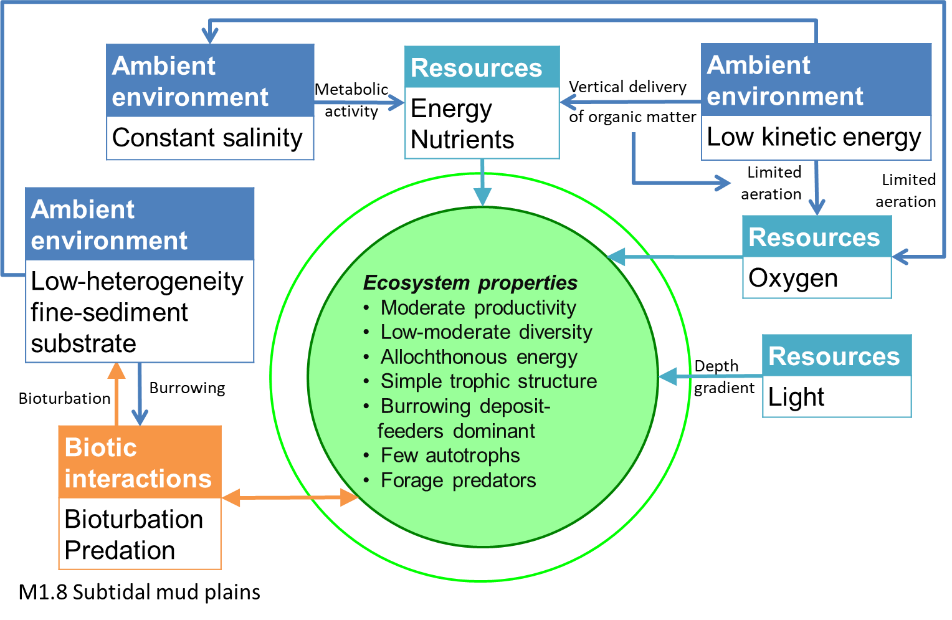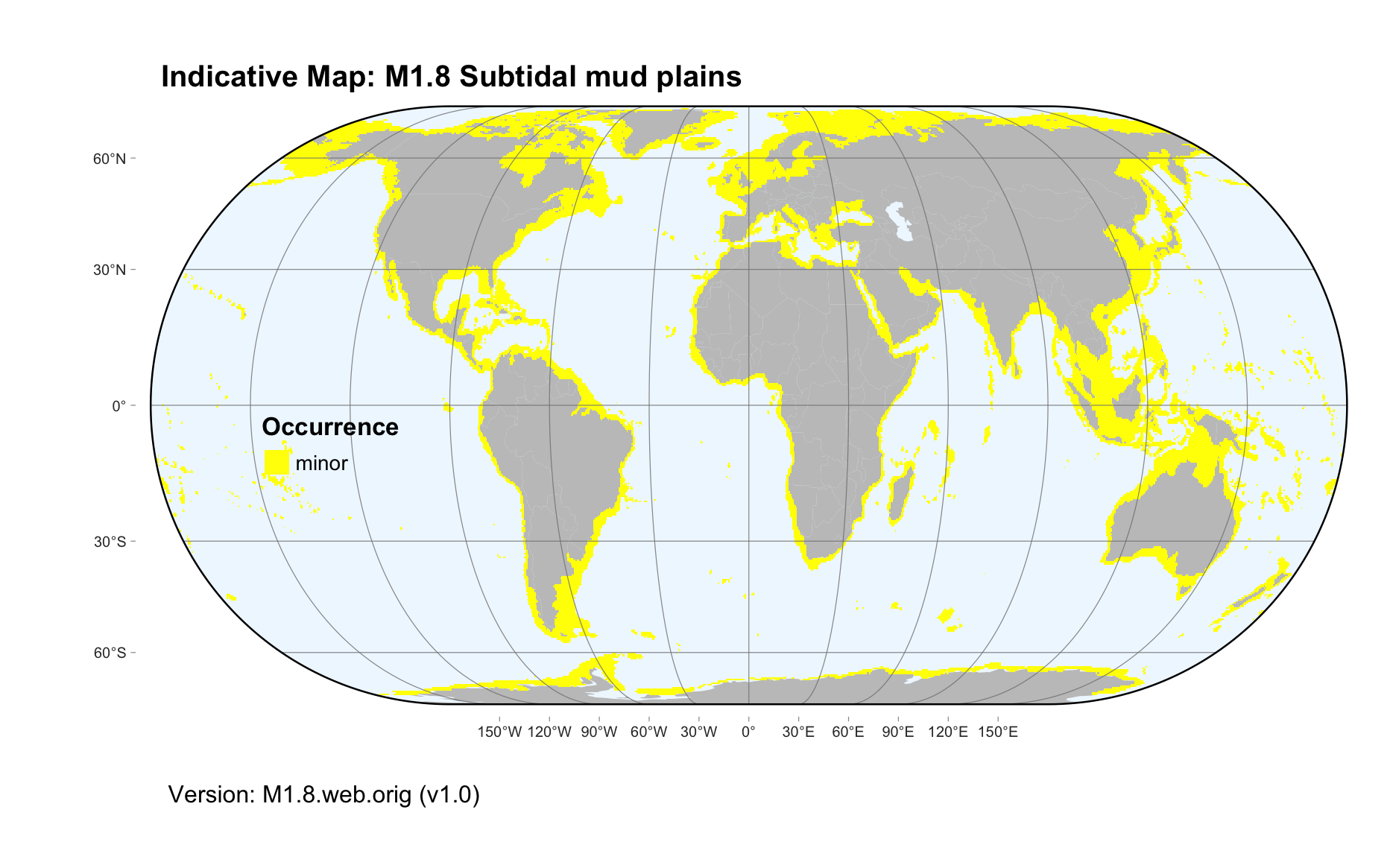Global ecosystem typology
Alternative site for the Global ecosystem typology with additional information for ecosystem profiles and indicative maps.
This site is maintained by jrfep
M1.8 Subtidal mud plains
Biome: M1. Marine shelf biome
Contributors:
(texts)
These low energy, muddy ocean shelf ecosystems are moderately productive and typically dominated by microalgal and bacterial primary producers, microbial decomposers, and larger deposit feeders like burrowing polychaete worms and molluscs. Unlike subtidal sand beds (M1.7), the microbial community has a strong influence on biogeochemical cycles. Low oxygen zones can form where concentrations of organic matter and associated high bacterial activity deplete this limited resource.
Key Features
Soft sediment with limited primary production, abundant micro- and macro-detritivores and associated foraging predators.
Overview of distribution
Low energy waters of continental and island shelves.
Profile versions
- v1.0 (2020-01-20): BA Polidoro; DA Keith
- v2.0 (2020-06-15): BA Polidoro; SE Swearer; DA Keith
- v2.01 ():
- v2.1 (2022-04-06): BA Polidoro; SE Swearer; DA Keith Full profile available at official site
Main references
Selected references for this functional group:
Byers JE, Grabowski JH (2014) Soft-sediment communities Marine community ecology and conservation (Eds. MD Bertness, JF Bruno, BR Silliman, JJ Stachowicz), pp227-249. Sinauer, Sunderland
Snelgrove PVR (1999) Getting to the bottom of marine biodiversity: sedimentary habitats Bioscience 49: 129-138 DOI:10.2307/1313538
Diagrammatic assembly model

Maps
Maps are indicative of global distribution patterns are not intended to represent fine-scale patterns. The maps show areas of the world containing major (coloured red) or minor occurrences (coloured yellow) of each ecosystem functional group. See general notes on maps.
There are 2 alternative versions of the indicative map for this functional group, please compare description and sources below.
M1.8.IM.orig_v1.0
Datasets
- GSFM-2014
Map references
Harris PT, Macmillan-Lawler M, Rupp J, Baker EK (2014) Geomorphology of the oceans. Marine Geology 352: 4-24. 10.1016/j.margeo.2014.01.011
M1.8.web.orig_v1.0

Datasets
- GSFM-2014
Map references
Harris PT, Macmillan-Lawler M, Rupp J, Baker EK (2014) Geomorphology of the oceans. Marine Geology 352: 4-24. 10.1016/j.margeo.2014.01.011
Check: the Glossary / Profile structure / the public document